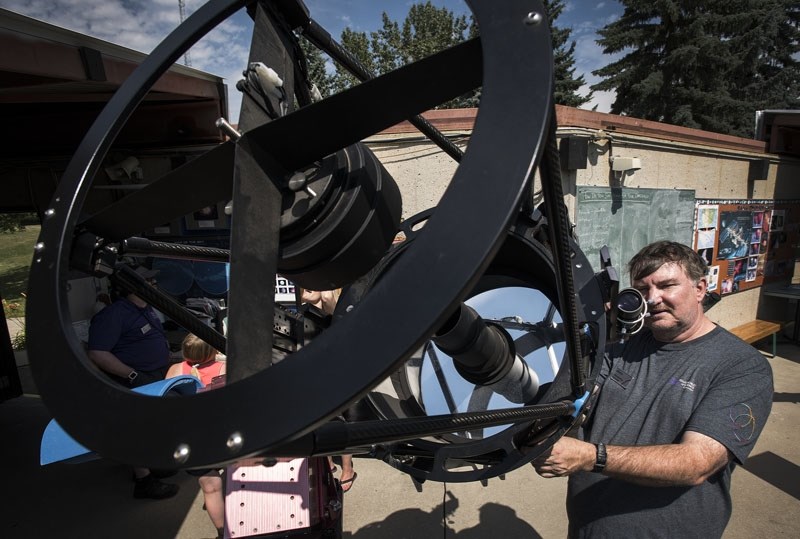The galaxy’s hottest stars will be out and about tonight as astronomers across the region hold a party to celebrate Canada’s 150th. Edmonton-area astronomers are inviting everyone to come out to the Telus World of Science tonight for Canada’s first annual Star Party. Organized by the Royal Astronomical Society of Canada and the Féderation des Astronomes Amateurs du Québec, the National Star Party aims to introduce thousands to the wonders of space observation in celebration of this nation’s sesquicentennial. The party also leads into the Royal Astronomical Society’s 150th anniversary, which is next year. Astronomers across Canada are hosting simultaneous star parties in their communities as part of this event, said Royal Astronomical Society member and St. Albert resident Bruce McCurdy. The society is holding the party at the end of July instead of on Canada Day as it’s darker at night now (Canada Day was close to the summer solstice, which is the shortest night of the year). McCurdy said he and other astronomers would be at the Telus observatory tonight with their telescopes, ready to point out all the stars in the sky for visitors. While the observatory is technically open every night this summer, it will stay open extra late (at least until 11 p.m.) for this event. “We’re going to be looking at what I call the Big Three,” he said, meaning Jupiter, Saturn and the moon. Guests will get a pretty superb view of the two planets and see the moon as it nears first-quarter, and may spot the International Space Station as it zips over. Canada’s history with astronomy goes all the way back to the First Nations and their traditional explanations for the stars and constellations, said Sharon Morsink, astronomer and physics professor at the University of Alberta. Explorers such as David Thompson would have used the stars extensively to track their position as they mapped the country. Our knowledge of astronomy has grown considerably in the last century, Morsink said. People didn’t know how stars made light 100 years ago (they had to figure out fusion first), and did not think there was anything outside the Milky Way galaxy. Back then, astronomy was mostly about tracking the position, brightness, and spectrum of stars, a job made easier by the fact that there weren’t as many satellites or as much light pollution in the way. Noted Canadian astronomers of the last century include Helen Sawyer Hogg of the University of Toronto (known for her research on globular clusters, which are mobs of thousands of stars) and the U of A’s Werner Israel, who calculated that black holes must be bald (perfectly smooth) due to their crushing gravity, Morsink said. The free event runs from 9 to 11 p.m. or later, July 29 at the Telus World of Science observatory. If you miss it, keep an eye on the skies for the Perseid meteor shower from Aug. 11-13 and a partial solar eclipse on Aug. 21, McCurdy said.




